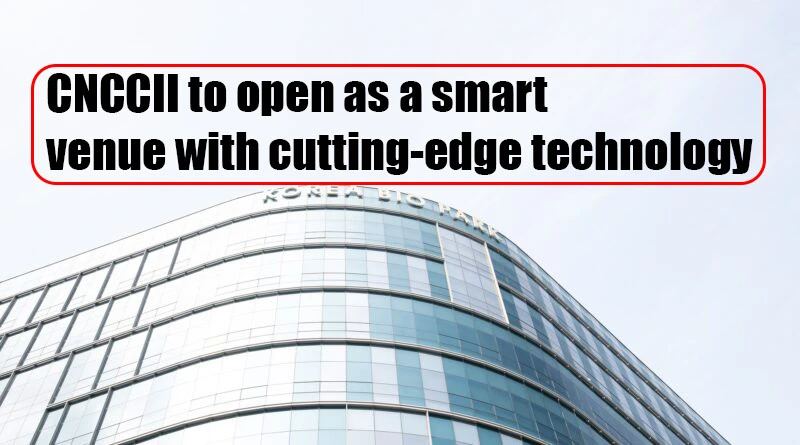The China National Conference Center, Segment 2 (cncc-ii), which functioned as the main media facility (mmc) for the Beijing 2022 Winter Olympics and Paralympics, is on track to take over as China’s best international convention centre.
Cnccii is surrounded by the iconic Olympic monuments of Beijing, including the national stadium (also known as the “hen’s nest”), the national aquatic centre (often known as “the water dice”), and the national speed skating oval.
It is situated in the centre of the Beijing Olympic critical area. Early in 2025, when it is expected to open, cnccii will be a smart venue built to adapt to changing customer preferences.
The technology team at Cnccii is working to develop a fully integrated technological capability, which will help shape a smart venue framework and provide visitors and event organisers with fresh and improved experiences.
Every contact at cnccii will depend on technology, from promoting and marketing the centre to organising and hosting events to the ultimate visitor experience. Rod Kamleshwaran, a cnccii pre-opening representative, states this.
Throughout the construction period, Cncc-ii utilised the whole life cycle bim utility. The use of bim in cnccii is regarded as one of the most versatile programmes some of the initiatives currently under creation in China because it has the best facts granularity of forward bim design.
Bim provides a practical digital representation of residences for a variety of sports. It was utilised during the stages of design, construction, and production and might have a positive impact on the entire course of cnccii life.
On the basis of 5G, cloud computing, the internet of things, and other technological advancements, Cnccii will set up a digital scene platform and a sensible event application platform.
One cannot miss the large, 25 m tall by 18 m wide, 8k resolution led display screen when entering the VIP atrium of the Cnccii. This conference centre is the first in China to offer a digital display of this size with bright colours and wider viewing angles.
This allows for up to 450 square feet of digital real estate to be used for activities including revealing messages, agendas, sponsor trademarks, visual storytelling, and more immersive user experiences for site visitors.
For live performances, operas, style shows, and other entertainment events at cnccii, the state-of-the-art electronic variable sound system approach professional sound first-class appropriate and will produce amazing reports.
By bridging the gap between centres and operations, Cnccii’s digital dual control platform will improve event experiences and performance.
The 420,000 square foot cnccii may be navigated via the ar indoor wayfinding device. the use of their smartphones for continuous, dynamic local guidance.
This generation makes the experience of the expansive inner cnccii area stress-free and tidy. Visitors may easily be guided from the event application to their meeting rooms upon arrival.
It will adorn the internal festivities in this enormous arena while also promoting safer conditions by helping guests locate emergency exits in urgent situations or effectively seating traffic in the middle to prevent congestion.
The digital assembly setup tool from Cnccii removes the guesswork from planning by allowing event planners to select their preferred room layouts and then preview the overall format with the number of attendees that can be accommodated.
This gadget will speed up installation, enhance traffic flow, and control crowds.
The amount of time and resources spent on-site will be significantly reduced thanks to a metaverse replication of cnccii that will speed up and simplify website inspections.
The centre can be explored using virtual reality technology while interacting with the establishment’s sales staff.
Planners can genuinely utilise a computer or put on a virtual reality headset to transition from a flatscreen experience to an immersive one where they can interact with the environment and the people in it. To meet the needs of each event, planners can also alter the desired space within the metaverse clone.
The development objective of Beijing’s Olympic main precinct is to become a vibrant, eco-friendly, dynamic hub for business meetings, tourism, cultural exchange, and technological innovation, enhancing Beijing’s role as China’s international exchange hub.
The visible machine was created by French architect Christian de Portzamparc in collaboration with the curtain wall design studio t/e/s/s (France) and the curtain wall consulting firm rfr (France). designer kenya hara, yabu & puchelberg, kaoru mende, designer of vital lighting fixtures, rooftop garden author shamsan gang-serlingen, and müller – bbm, an acoustic consultant. The cnccii is close to fulfilling its obligation to transfer this vision.
